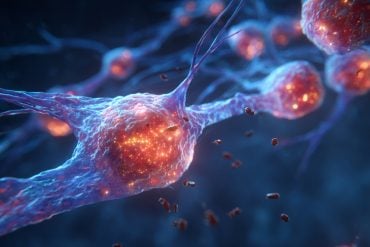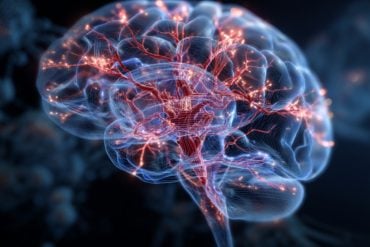Summary: A U.S. national study highlights the amplified trauma experienced by students victimized due to bias, such as ethnicity or sexuality.
The study analyzed responses from over 2,200 bullied students and found significant adverse effects on their health, self-esteem, social life, and academic performance, with intensified impacts for those facing multiple discrimination factors.
The research advocates for specialized school programs that focus on prejudice-driven victimization to prevent exacerbating existing inequalities.
Key Facts:
- About 25% of students experienced victimization in the past year, with 40% perceiving bias as a motivation.
- Victims of bias bullying reported three times more damage to self-esteem and increased harm to physical health, relationships, and school performance.
- The study calls for more inclusive school environments and targeted interventions, like Gay-Straight Alliance clubs, to combat bias-based bullying.
Source: Taylor and Francis Group
Students who feel they have been victimized because of social characteristics such as their ethnicity or their sexuality are at additional risk of trauma, a new national US study has revealed.
Published in the peer-reviewed Journal of School Violence, the research, of more than 2,200 young victims of bullying, found students reported that their physical health; self-esteem; social relationships, and schoolwork suffered more if they felt bias was behind the perpetrators’ actions.
This was particularly acute for those who felt they had more than one characteristic which put them at risk of discrimination.
Schools’ anti-bullying and violence prevention programs should place more emphasis on these types of prejudicial victimization, the findings conclude, and staff should work to identify those whose characteristics might make them particularly vulnerable.
“This study adds to the rising tide of evidence demonstrating that adolescent victimization motivated by bias is uniquely impactful. And I find that victimization involving multiple bias types appears to be especially influential,” states author Allison Kurpiel of the Pennsylvania State University.
“Students who experienced biased victimization were also more likely than nonbiased victims to perceive negative effects on their schoolwork, implying that biased victimization might contribute to lower educational achievement for minoritized groups.
This association between biased victimization and impacts on schoolwork was observed for students across the academic spectrum.
“The findings demonstrate that schools should prioritize programming that targets the reduction of biased victimization.
“Failing to do so could result in the exacerbation of existing inequalities through damage to students’ self-esteem, physical health, social relationships, and educational achievement.”
Allison, who is a PhD Candidate in the Department of Sociology and Criminology at Pennsylvania, investigated data on under-18s who filled in a School Crime Supplement to the 2017 and 2019 National Crime Victimization Survey – a nationally representative household survey conducted every two years in the United States.
Students were asked whether in the past year anyone had made fun of them, called them names, insulted them in a hurtful way, spread rumors about them or tried to make others dislike them, threatened them, pushed, shoved, tripped or spat on them, or tried to make them do things they did not want to do, such as giving away money. They were also asked if they had been excluded on purpose from activities or had their property destroyed in a non-accidental way.
Those who said they had been victimized in one or more of these ways were asked if they had ever thought this was related to their race, religion, ethnic background, disability, gender, sexual orientation or physical appearance.
They were then divided into two groups: those who said they had felt their experience was the result of these types of bias, and those who said they had not.
The research then analyzed the impacts on the victims, asking whether those who felt they experienced more than one type of bias were more likely to suffer adverse effects than those who suffered just one.
The study found around a quarter of all students had been victimized in the past year, and of those, around four out of 10 felt the actions were motivated by bias. The most commonly-reported bias – around three out of 10 of those who felt bias was a factor – related to physical appearance.
The most common forms of victimization were being threatened or being subject to the spreading of rumors, and these were each experienced by around two-thirds of victims. Overall, students who reported bias against them felt they had suffered a greater range of types of victimization than those who did not.
When it came to the perceived impacts, negative effects on self-esteem were the most common and were reported by more than a quarter of victims, while effects on physical health were the least common and were experienced by fewer than one in seven.
Those who felt their victimization was linked to bias were three times more likely to suffer negative effects on their self-esteem, the research found, and also had increased odds of damage to their physical health, social relationships and schoolwork.
Those who felt they suffered more than one type of bias had higher odds of experiencing all four of the negative effects which were measured. For example, each additional type of reported bias reported raised the odds of reporting negative effects on schoolwork by 70 percent.
Girls were more likely than boys to suffer all four negative effects, as were those who had lower grades.
“Peer aggression which involves prejudice causes additional harm and can threaten schools’ abilities to create inclusive learning environments,” adds Ms Kurpiel.
Her paper recommends schools should “work to raise awareness of these issues” and that prevention programs should aim, in particular, to identify students who are at risk because of multiple factors in their lives.
“One potential intervention is to increase school organizations designed to promote inclusivity, such as Gay Straight Alliance clubs, which have been demonstrated as effective for reducing multiple types of bias-based bullying among female students who identify as LGBT,” she states.
The results of the paper should be assessed while considering some limitations.
For example, all possible types of victim impacts were not measured, so “biased victimization might not be associated with greater odds of impacts than nonbiased victimization for some unmeasured outcomes (e.g., risky behavior)”, the study declares.
Factors related to the school climate that could be important for understanding the impacts of biased victimization (e.g., support groups) were not accounted for due to their lack of measurement in the data.
About this bullying and psychology research news
Author: Simon Wesson
Source: Taylor and Francis Group
Contact: Simon Wesson – Taylor and Francis Group
Image: The image is credited to Neuroscience News
Original Research: The findings will appear in Journal of School Violence







